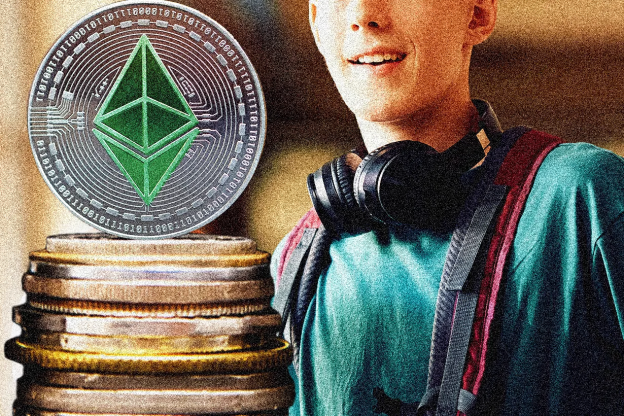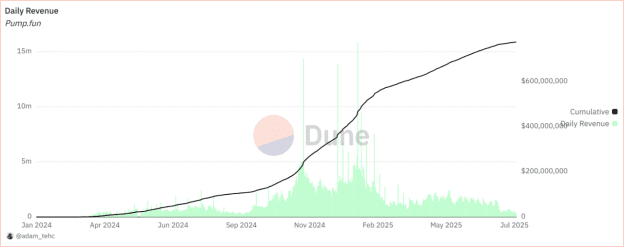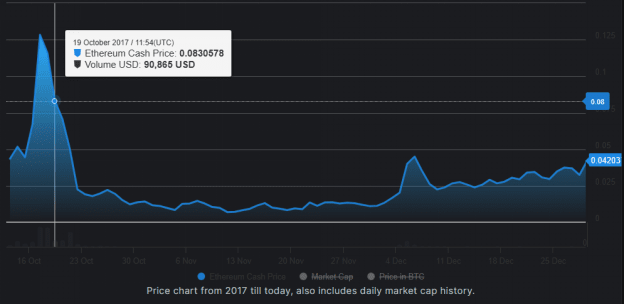Original author: Joel Khalili, Wired

Image source: WIRED Editorial / Getty Images
Editor's Note: The highly anticipated Pump.Fun platform token PUMP, which launched on July 15, peaked at around $0.007, before entering a one-sided downward trend. The public sale price of $0.004 failed to effectively halt the decline, and PUMP today has fallen below $0.003, severely impacting investor confidence in PUMP. Although the public sale explicitly prohibited U.S. users from participating, it did not prevent U.S. meme players from suffering losses in meme trading. The well-known law firm Burwick Law, which has initiated several meme coin investment lawsuits, announced yesterday that it will expand the scope of its lawsuit against the Pump platform, adding the Solana Foundation, Solana Labs, and Jito to the list of defendants.
Additionally, the 'average age' of the Pump.fun team has become a topic of eager discussion in the crypto community. According to previous reports by The New York Times, Pump.fun is headquartered in London, UK, and is led by three entrepreneurs in their twenties: Noah Tweedale, Alon Cohen, and Dylan Kerler. The three registered a physical company—Baton Corporation, with Noah Tweedale serving as CEO, and all three being directors of the company. They met in Oxford, UK, and have years of experience trading Dogecoin and other meme coins.
This is a piece from WIRED in April of this year, which may help readers understand the Pump.Fun platform and the people behind it.
Pump.Fun, the world's largest Memecoin factory, allows anyone to create their own cryptocurrency. However, years before the platform was launched, a person sharing the same name as co-founder Dylan Kerler had already made a small fortune by issuing and selling his own tokens.
According to WIRED's investigation, an individual named Dylan Kerler issued eight tokens in 2017. At that time, Pump.Fun co-founder Dylan Kerler was only 16 years old. Two of those tokens—eBitcoinCash and EthereumCash—gained attention on crypto forums before their prices plummeted, leading investors to accuse the developers of conducting a rug pull.
According to analysis by blockchain security company CertiK, the developer using the name Dylan Kerler earned as much as $75,000 in cryptocurrency solely from the sales of eBitcoinCash and EthereumCash in 2017—estimated to be worth around $400,000 at today's coin prices.
'After waiting for market share and price increases, they quickly cashed out,' said Wang Tielei, Chief Security Officer of CertiK. 'We strongly suspect that EthereumCash was designed by the developers as a tool for rug pulls.'
According to its co-founders, the purpose of Pump.Fun is to standardize token issuance methods to protect investors from unethical actors. However, there is already evidence that Dylan Kerler was precisely the type of developer that the platform aimed to guard against.
As of publication, neither Pump.Fun nor Dylan Kerler has responded to multiple requests for comment.
The Rise of Pump.Fun and Its Mysterious Founders
Pump.Fun was founded in January 2024 by three entrepreneurs in their twenties: Noah Tweedale, Alon Cohen, and Dylan Kerler. The platform quickly became the preferred incubator and trading venue for Memecoins.
These cryptocurrencies are highly volatile and mainly exist for speculation. According to third-party statistics, Pump.Fun has generated over $600 million in revenue through a 1% trading commission in just 15 months.

The three co-founders rarely disclose their identities, locations, or company structure. Tweedale stated in a WIRED interview last year that this anonymity is due to 'personal safety' considerations to prevent the enormous crypto assets managed by Pump.Fun from attracting extortion or attacks.
Among the three, public information about Kerler is the most scarce. Apart from being listed as a director in documents from Companies House, the UK company registry, he has virtually no public connections to Pump.Fun. Tweedale previously told WIRED that Kerler was responsible for leading the development team in writing platform code and functional iterations. Besides a X (formerly Twitter) account named @outdoteth, Kerler's digital footprint is almost non-existent.
However, a series of 'digital clues' left in corners of the internet, such as GitHub, YouTube, LinkedIn, and Medium, continue to link this name to the suspected rug pull operations of eBitcoinCash and EthereumCash.
Digital Footprint: Tracing Early Token Promotion
In 2017, the two tokens eBitcoinCash and EthereumCash were initially promoted by two accounts on the crypto forum BitcoinTalk: DOMAINBROKER and ninjagod, both of which belong to the same user. According to a forum message, after the DOMAINBROKER account was 'suspected to be hacked,' this user began using the identity of ninjagod to communicate with investors.

In a forum post promoting eBitcoinCash, DOMAINBROKER provided an email address containing Dylan Kerler's name and referred to it as a 'personal email'; in another EthereumCash thread initiated by ninjagod, several forum users directly referred to Dylan Kerler as a developer of the project.
Meanwhile, multiple clues indicate that Dylan Kerler, co-founder of Pump.Fun, was in the same area as the developers of eBitcoinCash and EthereumCash—the latter claimed to be located in Brighton, UK, in an old Telegram group.
Voter registration records reviewed by WIRED show that Kerler was still registered at an address in the Brighton-Hove area of the UK as recently as 2024. When a reporter visited this address on April 15, a resident who responded through the intercom refused to disclose their identity but stated that Kerler 'no longer lives here,' indirectly confirming the accuracy of the voter registration.
Company registration documents show that a physical company under Pump.Fun was registered at the same property in Brighton and Hove. This address is also shared by two other companies, both of which list 62-year-old Kee Fatt Phoon as a director. Additionally, Phoon is also registered as a voter at this address.
Aliases and Connections: Dylan Kerler or Dylan Phoon?
Dylan Kerler seems to have used the alias 'Dylan Phoon,' which shares the same surname as Kee Fatt Phoon, suggesting a possible familial relationship.
Until recently, a GitHub account using the nickname 'outdoteth' still retained an old code repository that contained a Gmail email named after Dylan Phoon; the avatar used for this email also appeared on a Medium account named DylanKerler1, as well as on LinkedIn and YouTube accounts under the name Dylan Phoon.

The aforementioned YouTube account uploaded a video about the cryptocurrency Skycoin. Although this project was created by others, its logo had also appeared on the BitcoinTalk account of ninjagod, which can be seen as indirect evidence that both projects originated from the same individual.
Another YouTube account named @dylankerler4130 had posted a video about the 'Equis' project, which claims to 'revolutionize the gambling industry.' Equis was also promoted by ninjagod on BitcoinTalk, and its code is identical to that of eBitcoinCash and EthereumCash. (The project did not generate investor interest on the forum.)
In summary, the two names used by Pump.Fun co-founder—Dylan Kerler and Dylan Phoon—can be traced back to accounts that promoted EthereumCash and eBitcoinCash on BitcoinTalk.
ICO Bubble and Early Rug Pull Patterns
eBitcoinCash and EthereumCash were both launched during the peak of the ICO craze by a developer using the name Dylan Kerler. During that time, hundreds of token projects raised billions of dollars from investors through the ICO model. ICOs became popular among crypto startups for not diluting equity.

Conducting an ICO typically involves a three-step process: deploying a contract on the Ethereum network to mint tokens, outlining the project's vision on a website, and raising investments from the public. Wang stated: 'Many projects are just a white paper and a countdown timer on a website—barriers to entry are extremely low.'
Analysts point out that while some projects funded through ICOs (like Ethereum) are still operational, most ICOs were manipulated, exaggerated, or even completely fraudulent, leading to tightened regulation. Many developers overstated project utility, manipulated prices to create hype, and even fabricated return rates.
'Developers aggressively promote the fantasy of high returns,' said Nicolai Søndergaard, a research analyst at blockchain analysis firm Nansen, 'and that is the source of FOMO psychology.'
The hustle and bustle of the ICO craze led many gullible investors to pursue profits with little due diligence, a phenomenon similar to today's investment behavior in questionable meme coins. 'The meme craze has many similarities to ICOs,' Søndergaard pointed out, 'It's very easy to sell a story to the public and then quickly harvest.'
The Hype and Crash of EthereumCash
A developer using the alias Dylan Kerler began promoting his most popular token—EthereumCash—in early October 2017.
The developer followed the standard script: minting tokens on Ethereum, building a website, and promoting on BitcoinTalk, Twitter, and Telegram. To generate hype, they distributed tokens for free through a so-called 'airdrop' and promised to release a white paper. At the time, a white paper was seen as a symbol of legitimacy and could potentially drive up prices.
Søndergaard pointed out: 'The release of a white paper can significantly enhance appeal. Even just the promise to release one is enough to stir market sentiment.'
Screenshots of a now-deleted website for the project circulating on Telegram revealed how it was marketed to potential investors. The page claimed: 'We are committed to making the transition from fiat to cryptocurrency as smooth as possible while still maintaining integrity and a high-end atmosphere (original language errors retained).' The bottom of the page also displayed an image of an EthereumCash bank card claimed to be usable for physical consumption.
A form obtained by WIRED shows that within just a few days, hundreds of people registered to participate in the EthereumCash airdrop. Meanwhile, discussions on the BitcoinTalk forum were lively. One user wrote: 'Let's spread the word and get more people to notice this excellent token.' As of October 19, the market capitalization of EthereumCash had risen to about $1.3 million.

But just as early investors were filled with anticipation, the developer named Dylan Kerler began quietly unloading.
CertiK's analysis shows that just days after the token's creation, Dylan Kerler distributed millions of EthereumCash to wallets under his control. One wallet starting with 0x7f3E2 was subsequently used to sell large amounts of tokens on the market.
Between October 19 and 21, 0x7f3E2 sold hundreds of batches of EthereumCash on the peer-to-peer trading platform EtherDelta. These sales coincided with a catastrophic drop in the asset's price, which fell by 87.9%.
On Telegram and BitcoinTalk, panic began to spread. One user, perhaps trying to find some humor in it all, started jokingly referring to the token as 'ECRASH.' Others accused the developers of being fully responsible. Another Telegram user who participated in the EthereumCash airdrop told WIRED: 'Everyone is very angry.' 'I think this is my first experience with a rug pull.'
The highly anticipated white paper never appeared, and ultimately, the developer named Dylan Kerler vanished from BitcoinTalk posts and Telegram groups. Just a few days earlier, he had written: 'I can assure everyone that the project is making significant progress.'
In three transactions on October 20 and 21, the developer's wallet withdrew a total of 240 Ethereum (ETH) in earnings from EtherDelta—approximately $75,000 at the time. After each withdrawal, these ETH were immediately transferred to another wallet address (0xc8ae1), which was then dispersed into three wallets: 0x7EAbb, 0x31728, and 0x952F3. Ultimately, these ETH were transferred to accounts on centralized exchanges like Binance, Bity, and the now-closed Cryptopia—platforms commonly used to convert cryptocurrencies into fiat currency.
WIRED has identified at least 20 wallets used by a developer who claims to be Dylan Kerler. These wallets were used to issue, airdrop, or sell eBitcoinCash and EthereumCash, or to transfer related income to centralized exchanges.
'The effect of this layered handling is to obscure the flow of funds,' Søndergaard said, 'If you have nothing to hide, there’s really no need to do this. It’s inherently suspicious.'
Although some investors still harbor fantasies of a return—on October 24, someone joked, 'I smell a white paper'—all signs have long pointed to the final outcome.

In an early October BitcoinTalk post, a developer wrote: 'This will be like a Pump and Dump, a round of raising and unloading, early investors can recoup their costs.' 'I'm sorry to be so frank, but that's the truth.'
Faster than wealth creation is forgetting
To this day, the frenzy surrounding Pump.Fun has not subsided. According to third-party statistics, its platform generates daily revenue of up to $1 million. The founders' wealth has soared, far surpassing that of eBitcoinCash and EthereumCash from years ago. While this 'wealth creation machine' continues to operate, the contrary rug pulls are still ongoing, almost without question.
In November last year, a teenager went live on Pump.Fun, creating and selling a token in just a few minutes, netting $30,000. He exclaimed, 'Holy fuck! Holy fuck!' while giving the camera a middle finger—this moment perhaps truly epitomizes this era.
Original link




